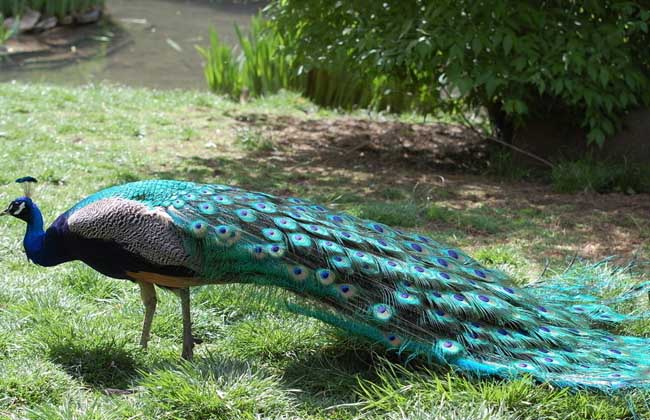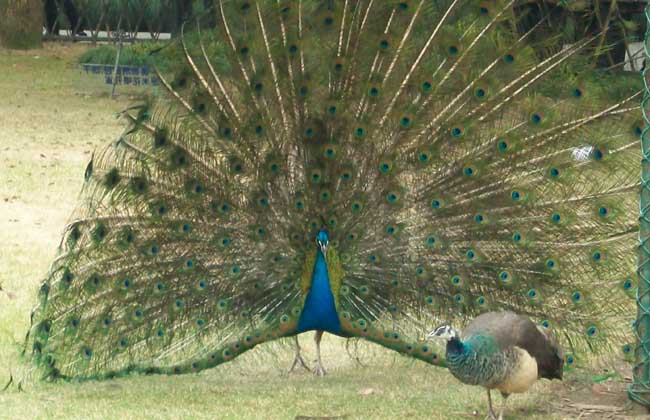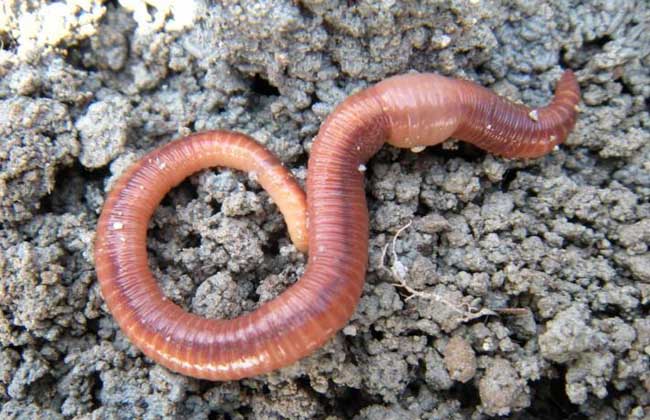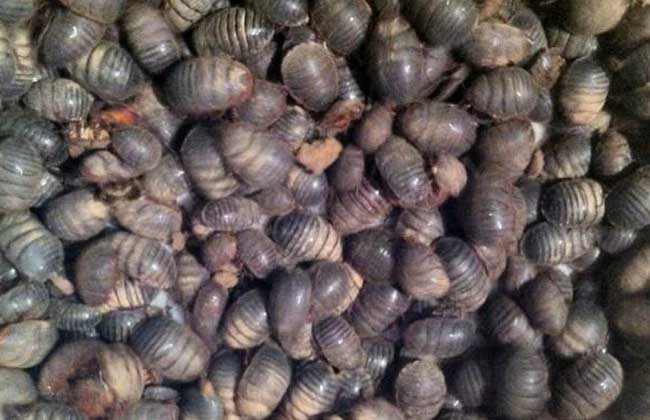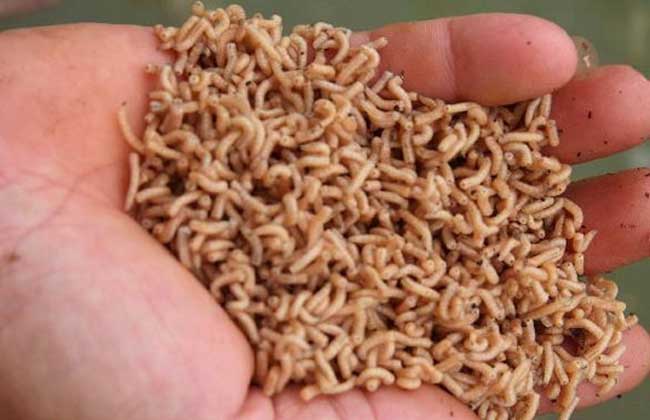猪精液-病毒传播的载体(四)Porcine semen as a vector for transmission of viral pathogens-Part 4Dominiek Maesa,*, Ann Van Sooma, Ruth Appeltanta, Ioannis Arsenakisa, Hans Nauwynckba比利时,梅勒尔贝克,根特大学,兽医学院,畜群健康与产科学,繁殖科a Department of Reproduction, Obstetrics and Herd Health, Faculty of Veterinary Medicine, Ghent University, Merelbeke, Belgiumb比利时,梅勒尔贝克,根特大学,兽医学院,病毒学实验室,免疫与寄生虫学,病毒学科b Department of Virology, Immunology and Parasitology, Laboratory of Virology, Faculty of Veterinary Medicine, Ghent University, Merelbeke, Belgium 关键词 Keywords:猪精液、猪、人工授精、病毒、回顾/检查Semen, Pig, Artificial insemination, Virus, Review接上文...6. 预防措施Preventive measures人工授精中心需要采用经济、有效且满足生物安全的方法,生产出适量品质可控的精液。防止疾病通过精液传播的最佳方法是,购买健康状况优良的公猪,执行严格的生物安全措施,并对公猪进行健康监测。Artificial insemination centers need to produce the appropriate quantity of quality-controlled semen in a cost-effective, efficient, and biosecure process. The best way to prevent disease transmission via semen is to purchase boars with a preferred health status, to maintain very strict biosecurity measures, and to monitor the health of the animals.6.1. 新进公猪的健康状况Health status of incoming replacement boars人工授精中心每年通常要更换60%的公猪,但是新进公猪会带来很大的疾病风险,因此对新进公猪实行隔离、驯化、充分的观察和检测,至关重要。首先,应掌握公猪来源猪群的健康状况。其健康状况应等同于,但最好高于人工授精中心的公猪。可通过兽医之间的沟通,了解新进公猪的临床诊断与实验室检查、疫苗接种计划以及来源猪群的兽医措施,通过这些来对其进行评估。其次,新进公猪应单独隔离30至60天。隔离区最好位于场外。猪群隔离必须遵守“全进全出”原则。隔离期间,应评估猪群健康状况,进行血液采样以检测是否有病毒血症或血清抗体,同时,对人工授精中心的公猪中出现的疾病进行疫苗接种治疗。感染危险病原体的公猪不得进入人工授精中心。不同的人工授精中心,隔离期、检测方案和疫苗接种方案均不相同,主要是由于不同的因素,如引入公猪的频率和原畜群动物的健康状况所决定[88]。Because new boar entry poses a great risk for disease, and because typically 60% of the boars in AI centers are replaced on a yearly basis, it is of paramount importance for incoming boars to implement proper isolation and acclimation procedures, with adequate time for observation and testing. First, the health status of the source herd should be known. The health status should be similar but preferably higher than the health status of the AI center. It could be evaluated through vet-to-vet communications of the diagnostics and laboratory examinations, vaccination programs, and veterinary involvement of the source herd. Second, replacement boars should be housed for 30 to 60 days in a separate isolation facility. Such a quarantine unit should be located preferably off-site. Isolation populations must always be flowed all-in/all-out. During this quarantine period, the health status should be evaluated, blood sampling could be performed to detect possible viremia or the presence of serum antibodies, and vaccinations can be applied against diseases present in resident boars of the AI center. Animals that are infected with pathogens of concern should not enter the AI center. The isolation period, the testing protocols, and the vaccination schemes vary between AI centers and depend on different factors such as the frequency of boar introduction and the health status of the animals of the origin herds [88].6. 预防措施Preventive measures6.1. 生物安全措施Biosecurity measures人工授精中心最重要的生物安全措施涉及以下内容[3,88]:(1)人工授精中心的位置及通风设备--应尽可能远离猪群。在猪只密集区域使用空气过滤系统,以保证人工授精中心避免病原通过空气传入[89]。确保通风设备不会将公猪站内的空气排向实验室。如果实验室紧挨猪舍,则应采用正压通风,从而最大程度地减少从猪舍到实验室的空气渗透。(2)对于进入人工授精中心的员工和来访者,应有严格规定。员工需要隔离1至3天。隔离期间,不允许与猪只接触。此外,建议对所有来访者和员工施行人员进出淋浴措施。(3)精液拿取地点及递送——精液递送人员拿取精液的地点,应位于人工授精中心的外面。精液拿取点应是独立的房间,或至少是独立于实验室和公猪站的房间。把精液拿取点单独分开,可以最大程度上避免精液冷却器、靴子、衣物等的交叉污染。每个母猪舍的精液放置点应位于办公室外。任何送入人工授精中心的物品(例如,物资、设备),在这之前都不应该接触过猪。应在送入人工授精中心之前,将物品放入指定房间消毒。(4)灭鼠及昆虫 - 老鼠及昆虫可携带及传播多种猪病毒,因此应采取适当预防措施。(5)水质 – 应定期分析公猪的水源。如果质量不合格,应更换水源或对水进行适当处理。(6)执行严格的清洁消毒程序。The most important biosecurity measures for AI centers relate to the following items [3,88]: (1) location of the AI center and ventilation -- the AI center should be located as far from pigs as feasible. Filter systems for incoming air could be used in pig-dense areas to safeguard AI centers against entry of airborne pathogens [89]. The facilities should be oriented so that exhaust air from the boars does not exhaust toward the laboratory. If the laboratory is connected to the animal facility, there should be positive pressure ventilation to minimize air infiltration from the animals into the laboratory. (2) Employees and visitors -- strict regulations should be in place for persons entering AI centers. A downtime of 1 to 3 days may be required for persons entering the AI center. During this downtime period, persons are not allowed to have contact with pigs. In addition, it is recommended to have a shower-in/shower-out policy for all visitors and employees. (3) Semen pickup point and deliveries -- the semen pickup point for the courier delivery personnel should be located at the outside of the AI center. This pickup point should be in a separate room, or as a minimum, a separate room from both the laboratory and the stud population. By having a separate pickup point, cross-contamination of semen coolers, boots, clothing, and so forth is minimized. Drop-off points at each of the sow units should be located outside of the office. Any deliveries (e.g., supplies, equipment) on the AI center should not have been exposed to pigs previously. They should be delivered directly to a designated receiving chamber and properly disinfected before entering the AI center. (4) Rodent and insect control - rodents and insects are capable of carrying and transmitting several pig viruses, and therefore, proper prevention measures should be in place. (5) Water quality - water sources for boars should be analyzed regularly. If the quality is insufficient, the water source should be changed or the water should be treated properly. (6) Implementation of strict cleaning and disinfection procedures.6. 预防措施Preventive measures6.3 公猪健康监测及疫苗接种Animal health monitoring and vaccination最普遍的方法是监测公猪的健康状况及临床表现。如果出现临床问题,在动物康复之前不得收集精液。用自动化的方法测量公猪的采食量和饮水量,从而更容易地在早期发现患病的公猪。每天有针对性的,对公猪的健康状况及表现进行多次监测,但这仍是一种非常基础的方法,并不能够独立监测病毒感染和/或精液中病毒的存在。因此,建议制定针对特定疾病的免疫、除虫及取样的标准方案,并定期进行回顾检查。公猪的免疫接种可以非常有效地清除病毒或减少散毒,并降低人工授精传播病毒的风险。首先,人工授精中心需要遵守该国的动物卫生法规,例如,强制性地接种ADV疫苗,因为是官方消灭病毒计划的一部分(例如东欧),而在其他已正式清除ADV的国家,可能禁止ADV的免疫接种(例如西欧,北美)。高效重组标记疫苗和多种精确的酶联免疫吸附实验(ELISA)的结合,已使在世界上大范围内(例如许多欧洲国家和北美)清除ADV成为现实可能[48]。《欧洲药典》要求,公猪接种注射用ADV疫苗后,其精液不能使用[90]。其他无法律法规要求的疾病,人工授精中心可自行决定使用哪种疫苗。接种PPV和PCV2疫苗,可能有助于减少感染后散毒[91]。就PRRSV而言,公猪接种弱毒疫苗后50天内,体内野毒的散毒能力可被降低或消除 [92,93]。不可忽视的事实是弱毒疫苗只能提供部分免疫保护,导致疫苗病毒在精液中的散毒长达39天。[17,92]。相比而言,灭活疫苗不能明显减少精液中野毒的排散[92]。The most general method is to monitor the health of the boars and the presence of clinical signs. In case of clinical problems, no semen should be collected until the animal has recovered. Feed and drinking water intake of the boars may be measured in an automated way, allowing to identify diseased boars more easily and at an early stage. Monitoring the health and performance of the boars, even if applied accurately and more than once a day, remains a very basic approach that is insufficient as a stand-alone measure to detect viral infections and/or the presence of viral pathogens in semen. Therefore, it is recommended to develop standard protocols for vaccinations, deworming, and sampling for specific diseases and to review these on a regular basis. Vaccination of boars can be highly effective in eliminating or decreasing shedding of viruses and decreasing the risk of virus transmission by AI. First of all, AI centers need to adhere to the animal health regulations of the country, e.g., vaccination against ADV may be mandatory because it is part of an official eradication program of the virus (e.g., Eastern Europe), whereas in other countries, vaccination may be forbidden because the country is officially free of ADV (e.g., Western Europe, North America). The combination of highly efficacious marker vaccines and accurate differential ELISAs has made eradication of ADV from large areas of the world practical and feasible (e.g., many European countries, North America) [48]. According to requirements of the European Pharmacopoeia, ADV vaccines for parenteral use must not be transmitted by semen [90]. For other diseases, no legal regulations are in place and the AI center can decide which vaccines to use. Vaccination against PPV and PCV2 may help to reduce shedding of the virus after infection [91]. In the case of PRRSV, the use of an attenuated vaccine shortened or eliminated virus shedding in boars challenged with wild-type virus for 50 days after vaccination [92,93]. Apart from the fact that only partial protection is conferred against infection, vaccination with an attenuated vaccine led to semen shedding of the vaccine virus for up to 39 days [17,92]. In contrast, an inactivated vaccine did not clearly reduce subsequent shedding of wild-type virus in semen [92].因为需尽早发现可能存在的病毒(如PRRSV)感染,健康监测对人工授精至关重要。 一般情况下,需要检测血液和精液样品中是否存在病毒和/或抗体。不同人工授精中心的检测程序相差很大。因为有时检测血液和精液会出现不同的结果,且存在不确定因素,如最佳检测频率、样本数量、诊断方法以及检测结果的解读,所以检测程序很复杂[87]。Health monitoring programs are critically important in AI centers, as possible infection with pathogens (e.g., PRRSV) should be detected as soon as possible. Mostly, both blood and semen samples are tested for the presence of virus and/or antibodies. Monitoring programs can very between AI centers. They can be complex because blood and semen tests can sometimes generate different information, and uncertainties exist regarding optimal testing frequency, numbers of animals to test, diagnostic test to choose, and how to interpret the test results [87].6. 预防措施Preventive measures6.4 无病毒精液收集技术Technologies to obtain virus-free semen对精液进行处理并添加抗菌剂可稀释精液,且减少细菌污染,但这些措施无法清除病毒[4,5]。目前,尚无有效的抗病毒剂可以保证精液无病毒。精液中存在许多蛋白质,以及类固醇激素、酶以及其他物质,可在一定程度上防止病毒感染,但是,这些物质同时也可能损害精子。因此,需要保持微妙平衡[94]。Semen processing and addition of antimicrobials may have a possible dilution effect and decrease bacterial contamination, but these measures do not eliminate viruses [4,5]. Effective antiviral agents to render semen virus-free are currently not (yet) used in practice. Many different proteins found in semen along with steroid hormones, enzymes, and other substances may provide some protection against viral infections, but at the same time, these substances could damage sperm. Therefore, a delicate balance of these substances needs to be maintained [94].猪精液胶体离心至少有20年历史,从早期的密度梯度离心,到近期发展的单层离心(SLC)[95]。与密度梯度离心相比,后者更加便捷。使用单层离心技术可消除病原(细菌和病毒),进而提高精液的生物安全性,以及减少抗菌剂的使用。 在Blomqvist等人[96]的研究中,可从精液中去除99%以上的PCV2,初始感染病毒滴度降为3.25至3.82 TCID50/50μL。Colloid centrifugation of boar semen has been reported sporadically for at least 2 decades, beginning with density gradient centrifugation and progressing more recently to single-layer centrifugation (SLC) [95]. The latter method is easier to use and less time-consuming than density gradient centrifugation. The technique can be used to remove pathogens (bacteria and viruses), thus improving biosecurity of semen doses and potentially reducing the use of antimicrobials. In a study by Blomqvist et al. [96], it was possible to remove more than 99% of PCV2 from semen with an initial infectious virus titer of 3.25 to 3.82 TCID50/50μL.Martinez-Alborcia等[97]提出,精液冷冻前,使用Androcoll-P的胶体对精液样品进行单层离心(SLC)可提高精子冷冻存活率,并改变冷冻保存精子的功能。随后的一项研究表明,使用Androcol-P对公猪单次射精精液进行SLC处理,能够全部处理富含精子部分,可以提高精子的冷冻生存能力,以及精子解冻后的受精能力[98]。此技术可清除病原,改善精子的冷冻保存,这两点有利于使具有遗传优势的公猪冻精,在进行国际贸易时更加容易。不过,SLC需要进一步研究改善,如,使其更加快捷、可靠。Martinez-Alborcia et al. [97] reported that SLC of semen samples using a pig-specific colloid called Androcoll-P before freezing enhances sperm cryosurvival rates and modifies the functionality of the cryosurviving sperm. A subsequent study showed that SLC processing of boar ejaculates using Androcoll-P is able to process the entire sperm-rich fraction of a boar ejaculate, improving both the sperm cryosurvival and the fertilizing ability of thawed spermatozoa [98]. The removal of pathogens coupled with improved cryopreservation are two important advantages of the technique allowing easier international trade of frozen–thawed semen doses from genetically valuable boars. However, further research is necessary to improve SLC, e.g., by making the technique less time-consuming and the results less variable.7.结论Conclusions人工授精会将猪精液中的病毒快速引入母猪群,进而引起猪群感染发病,所以带毒精液会给种猪群带来风险。公猪入场前的检测、在人工授精中心期间的常规监测,精液交付前的定期检测、执行严格的生物安全措施,这些均可增强生产者对人工授精技术的信任,相信其可提供大量安全且遗传特性优良的精液。同时,预防病毒污染精液是重中之重,若精液一旦带毒,相比预防,清除病毒更加困难。不过,新型精液加工处理方法(如SLC)的研发,会逐步让人们对人工授精这一安全的
养猪繁殖技术,更有信心。Viral contamination of porcine semen poses a risk for breeding herds because AI may lead to fast introduction of viruses into sow populations and to loss of disease-free status for these pathogens. Pre-entrance testing of boars, routine health monitoring of boars during their stay in the AI center, regular testing of semen before delivery, and enforcement of strict biosecurity protocols at the AI center provide most producers with a high level of confidence that AI is a relatively safe means to offer unlimited exchange of desirable genetic characteristics. Prevention of viral contamination of semen should be a primary focus because it is easier to prevent contamination than to eliminate viruses once they are present in semen. Nevertheless, research and development of novel semen processing treatments such as SLC may even further instill confidence in the use of AI as a safe reproductive technology for pig production.完-The end-

